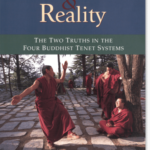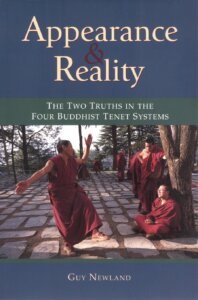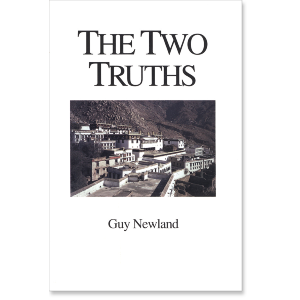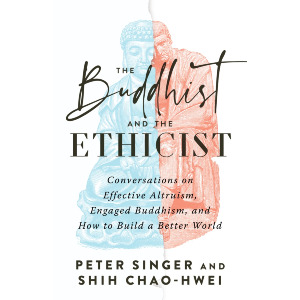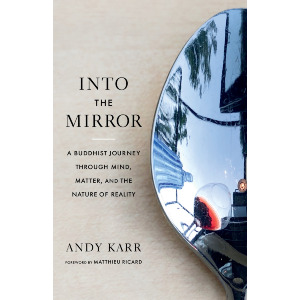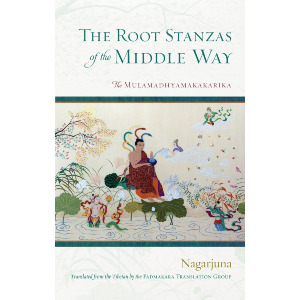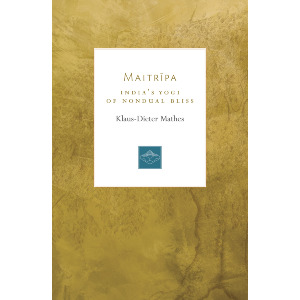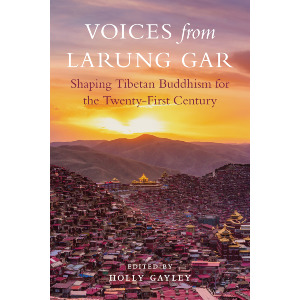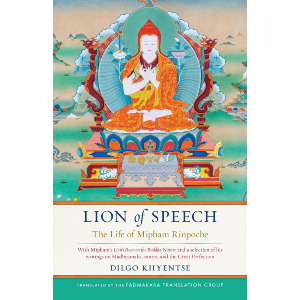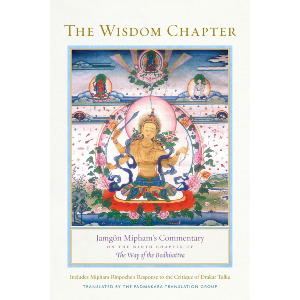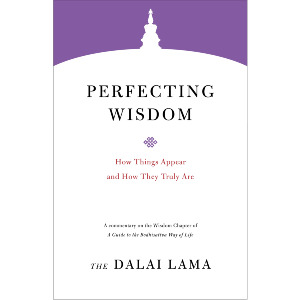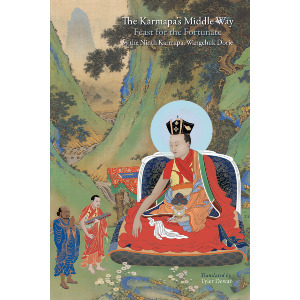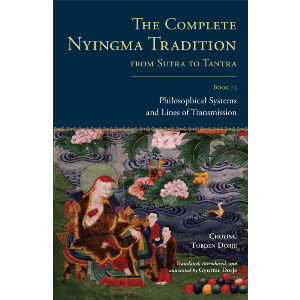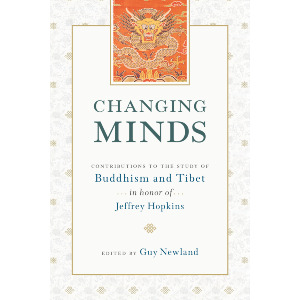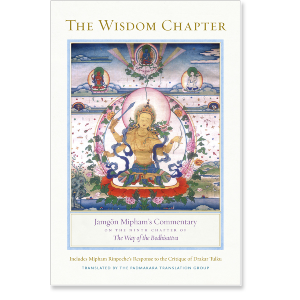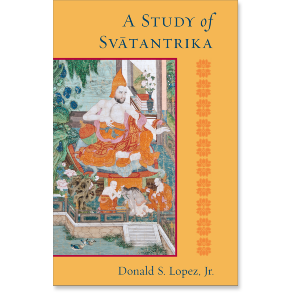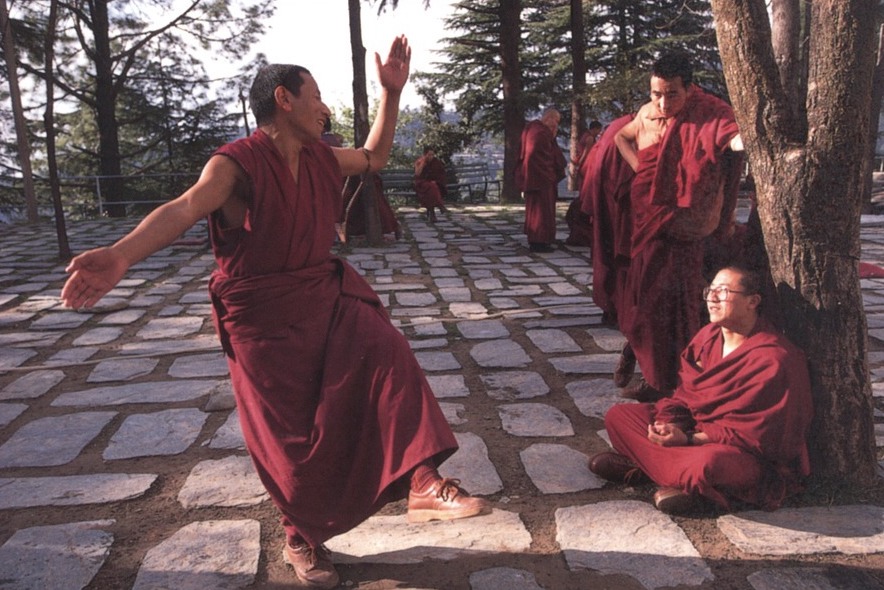
| The following article is from the Summer, 1999 issue of the Snow Lion Newsletter and is for historical reference only. You can see this in context of the original newsletter here. |
The Two Truths in the Four Buddhist Tenet Systems
When someone seeks to understand Buddhism, where should that person start: With the meaning of taking refuge in the three jewels? With the four noble truths? The Dalai Lama, when asked this question, suggested that for many in the West today, understanding the two truths, conventional truth and ultimate truth, is the best place to start.
When the Buddha awoke from the dream we still dream, he saw the ultimate reality of things just as they are. There are shifting appearances and conventions, the manners and traditions of the vast and diverse world; and then there is the mystery of the sheer reality of things. And yet we cannot find this reality anywhere else but right here.
Each system of Buddhist philosophy has its own way of explaining exactly what these two truths are and how they relate to one another. In exploring these systems, we are looking over the shoulders of Buddhist thinkers as they grapple with a basic question: What is real?
This is not an idle intellectual exercise, but a matter which cuts to the heart of our practice in life.
Guy Newland received a Ph.D. from the University of Virginia in 1988 and is now Associate Professor of Religion at Central Michigan University. He has studied with several leading Tibetan scholars in the U.S. and India One of his earlier works, The Two Truths (Snow Lion: 1992), analyzed the Geluk view of Nagarjuna's two truths doctrine. Currently, he is collaborating with Joshua Cutler in editing the first complete English translation of Tsongkhapa's Great Treatise on the Stages of the Path to Enlightenment, from Snow Lion Publications.
Continue to excerpt from Appearance and Reality below
Two Truths in Four Systems
The two truths are (1) ultimate truths (don dam bden pa, paramartha-satya) and (2) conventional truths (kun rdzob bden pa, samvrti-satya). Explanations of the distinction between the two truths find a place in the assertions of each of the four tenet systems that are recognized by the Geluk order of Tibetan Buddhism as authentic formulations of Buddha's teaching. Just as the seal of a notary marks a document as authentic, these four systems each have four seals, or views, that mark them as authentic Buddhist doctrine:
- All products are impermanent
- All contaminated things are miserable
- All phenomena are selfless
- Nirvana is peace
Ranked from the highest (that is, most profound) to the lowest, the four systems that share these views are:
Great Vehicle (mahayana) tenet systems:
1. The Middle Way school (madhyamika)
2. The Mind Only school (cittamatra)
Lesser Vehicle (hinayana) tenet systems:
3. The Sutra school (sautrantika)
4. The Great Exposition school (vaibhasika)
There are subdivisions such as the Middle Way Autonomy and Middle Way Consequence branches of the Middle Way school, the Followers of Scripture and the Followers of Reasoning within the Sutra school, etc. Still, Gelukpas traditionally claim that all who hold Buddhist tenets can be included within one of these four schools. This does not comprise all Buddhists because there are many persons who have taken refuge in the three jewels from the depths of their hearts (and thus are Buddhists), but who do not propound Buddhist tenets. It is also said that to qualify as a proponent of a particular system, it is necessary actually to realize the selflessness taught by that system. Thus, for example, one does not become a proponent of the tenets of the Middle Way school until one first realizes emptiness as it is explained in the Middle Way school. The word translated as tenet (grub mtha', siddhatita) means an established conclusion, and thus a proponent of tenets is a not a person who is merely sympathetic with a certain position; it is a person who knows it to be correct and intends not to give it up.

Jamyang Shayba remarks that to talk about the distinction between the two truths without knowing their basis of division is like climbing out on the branches of a . tree that has no roots.
However, what one system regards as a profound and definitive knowledge may be superficial or even wrong from the viewpoint of a higher system. The primary metaphor behind the Geluk study of tenets is not the time-line of Western scholarship, but a ladder on which the rungs are tenet systems. Each higher rung provides a better view than that below it, but only when one reaches the highest rungthe Middle Way Consequence schooldoes one see how things really exist. On the other hand, any rung on the ladder of Buddhist tenets gives a better view than one could get in the world, standing on the ground. The lower tenet systems, like rungs on a ladder, also provide a good means of access to the higher tenet-rungs.
Pushing the metaphor farther: Higher tenet-rungs may be dangerous for those not prepared for them. For some, it may be best to stay, for the time being, with a lower tenet system. On the other hand, it is not necessary that everyone move up the ladder of tenets one rung at a time. When one studies tenet systems, one moves through the systems one at a time, reflecting upon what one learns at each stage. However, when it comes to adopting the view of a tenet-system as one's own and seeking to develop realization of that view, the traditional advice is that one should find the highest view within the context of which one can maintain confidence in karmic cause and effect. One should not cultivate the view of the lowest system just because one feels humble.
We need to develop and to maintain confidence that our actions have consequences, that what we do makes a difference, that there are persons who suffer, etc. In one sense, these teachings are more fundamental to Buddhism than teachings about emptiness. If one looks at what most Buddhists in world actually do, one basically finds practices of giving, ethics, patience, and effort, motivated by a simple wish to help others and/or to improve one's own prospects within cyclic existence. Actual aspiration to escape cyclic existence and actual effort to realize emptiness are somewhat less common. Since they begin with an innate tendency to reify rather than an innate tendency to nihilism, the faith of ordinary Buddhists in persons, karma, ethics, compassion, etc. is interwoven with this tendency to reify.
The yogi must try to eliminate factors of reification without destroying confidence in persons, karma, and so forth. If working with a particular view is pushing one into the conviction that nothing matters, nothing exists, nothing makes a difference, it doesn't matter what one does, etc., then one should back off and consider the views of a lower tenet system. The higher rungs are dangerous because they refute progressively more subtle types of reification. They therefore increase the risk of slipping into nihilism.
The views that make one system higher than another include various philosophical and psychological issuesthe most important of which is the question of what constitutes selflessness, or emptiness (stong pa nyid, sunyata). The four tenet systems, therefore, should not be confounded with the four sects, or orders (chos lugs), of Tibetan BuddhismGeluk, Sakya (Sa skya), Nyingma (rNying ma), and Kagyu (bKa' brgyud)which are commonly distinguished by the differences in the types of ritual and meditation that they prefer. Kensur Yeshe Tupden explains that within each order there are proponents of various tenet systems, as well as many other Buddhists who are not proponents of any tenet system.
In the following pages, we will consider the two truths as they are presented by each of these four tenet systems, beginning with the Great Exposition system and proceeding through the Middle Way system. We should note, however, that it is the highest system, the Middle Way system, that gives greatest weight to the topic of the two truths. The Great Exposition system and the Sutra system devote much greater attention to the four noble truths (true sufferings, true sources, true cessations, and true paths), while the Mind Only system emphasizes the three natures (thoroughly-established nature, other-powered nature, and imputational nature). It is the Middle Way system that discusses the two truths in the greatest depth and detail, and thus by focusing on the two truths as they are seen by the four tenet systems we have to some degree imposed the program of the Middle Way system upon the three lower systems. We will approach the lower systems from an angle determined by the Middle Way system, thereby setting a backdrop against which we may better appreciate the presentation of the two truths in the Middle Way system.
Nagarjuna, the philosophical pioneer of the Middle Way system, proclaimed the importance of the two truths in his Treatise on the Middle Way:
The doctrines that Buddha taught are based upon two truths:
Worldly conventional truths and truths that are ultimate objects.
Those who do not know the distinction between these two truths
Do not know the profound suchness in Buddha's teaching.
In trying to understand the distinction between the two truths, it is well to begin by asking, What is it that the two truths are two types of? or, What is it that, when divided, gives us the two truths? Jamyang Shayba, who authored an important textbook on the Middle Way system, remarks that to talk about the distinction between the two truths without knowing their basis of division is like climbing out on the branches of a tree that has no roots. Outside the Geluk tradition, there are many different assertions about the basis of division, but within the tradition there is agreement that the basis of division is objects of knowledge (shes by a, jneya). The Gelukpa arguments for this position, which we will discuss later, are set forth specifically from the viewpoint of the Middle Way systembut the conclusion, that objects of knowledge are the basis of division of the two truths, can be carried over into the other three tenet systems.
It is critical to keep in mind that conventional truths and ultimate truths are not two types of viewpoint or perspective on the world, nor two levels or reality, noras one might naturally expecttwo types of truth. They are objects that exist and can be known. Existent (yod pa) and object of knowledge (shes bya) are equivalentthat is, whatever is one is the other. Since everything that exists is an object of knowledge, it follows that every existent must be one or the other of the two truths. The two truths are not confined to the realms of ideals and abstraction, as we might presume through familiarity with expressions such as, beauty, truth, and goodness and, the truth will prevail. We can take anything that exists and ask, Is this a conventional truth or an ultimate truth? A table, for example, is a conventional truth according to the Middle Way system, the Mind Only system, and the Great Exposition system, but an ultimate truth according to the Sutra System Following Reasoning.
By asserting that objects of knowledge are the basis of division of the two truths, Gelukpa teachers make the point that the two truths are knowable, accessible to understanding. Some systems teach that there are mysteries so deep or truths so profound that our minds no matter how well-trained and purified will never fathom them. According to the Geluk system, this is not the case. Indeed, some of the most important things, like emptiness, are extremely difficult to penetrate, and there are some things such as the subtlest details of the relationship between a specific action and its moral effect that only buddhas can know. However, even before one has become a bodhisattva, it is possible to realize the most profound emptiness, an ultimate truth, through the skillful use of reasoning within meditation. Moreover, each sentient being can and should aspire to transform his or her mind into the omniscient wisdom consciousness of a buddha, a mind that simultaneously and directly knows everything that exists every ultimate truth and every conventional truth. Thus, the two truths are two types of things that we can know, and that we should aspire to know.
Related Books
$32.95 - Paperback
$21.95 - Paperback
$21.95 - Paperback
The Root Stanzas of the Middle Way
$24.95 - Paperback

